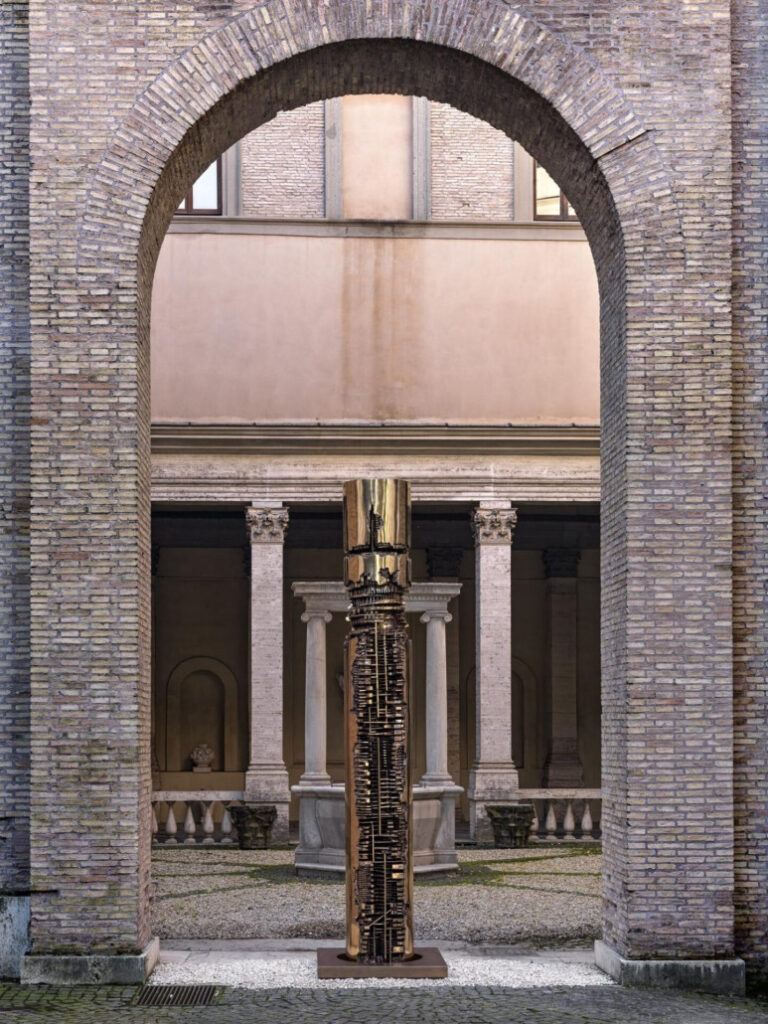
Arnaldo Pomodoro
La Colonna del viaggiatore, 1965/66, II, 1965-1966
bronze, 360 × ø 50 cm
La Colonna del viaggiatore, 1965/66 is one of the most significant works of Arnaldo Pomodoro's artistic career and earned him, in 1967, one of the six International Sculpture Awards from the Carnegie Institute of Pittsburgh, together to Josef Albers, Francis Bacon, Victor De Vasarely, Joan Miró, Eduardo Paolozzi. The sculpture, later purchased by Nelson Rockefeller, is now in the collection of The Rockefeller Estate, Kykuit (Sleepy Hollow, NY). Another example of the edition was acquired by the National Gallery of Victoria in Melbourne in 1969, while the artist's proof has been part of the collection of the Foundation since its establishment, received as a donation from the artist himself.
The columns bear witness to an important constant in Pomodoro's art since the very early 1960s: the meditation on geometric shapes, as a reference to the essential models of sculptural codes. The column is a supporting element of classicism, in its architectural meaning as well as in being a place where stories take place, as evidenced by the Egyptian obelisks and Roman columns. Pomodoro strongly recovers this sense of the story: inserting the corrosive sign on the archetypal model, breaking it and re-proposing it in new forms, full of allusive meanings that range from the memory of ancient civilizations in ruins to disturbing postmodern structures.
“The column – explains the artist – does not only correspond to an elementary geometric shape, the cylinder, but also constitutes a motif rich in memories. A relationship is established between the external surface, on which I made longitudinal and transversal splits, and the signs, that is, the writing interventions that emerge from its interior. La Colonna del viaggiatore, in particular, indicates the desire to discover space (after Gagarin's flight for me the traveler was the new conqueror of the cosmos) and refers to the varied theme of travel, which is also conversation, it is present, past, memory and imagination, it is movement”.
Do you want to know more about this work?
Go to the Catalogue Raisonné online!
On loan to the Italian Embassy at the Holy See in Rome from 2021



